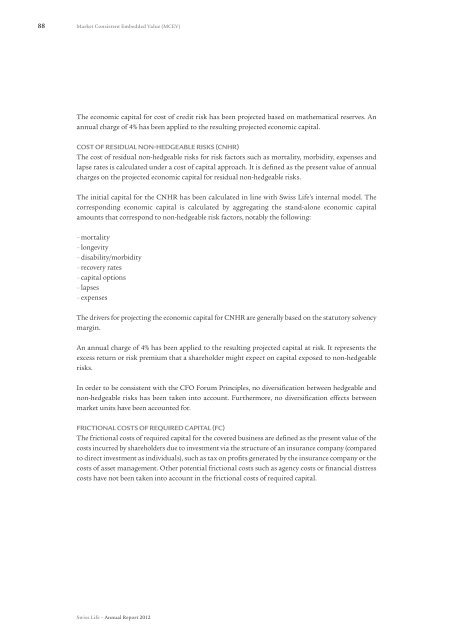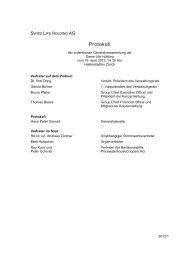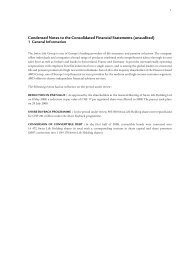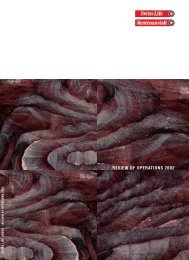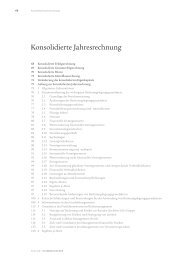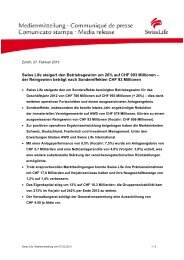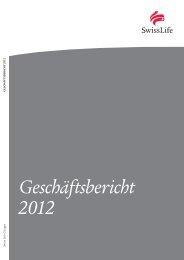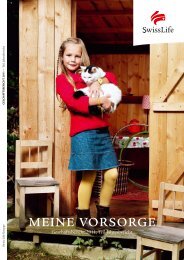Annual Report 2012 - Swiss Life
Annual Report 2012 - Swiss Life
Annual Report 2012 - Swiss Life
Create successful ePaper yourself
Turn your PDF publications into a flip-book with our unique Google optimized e-Paper software.
88 Market Consistent Embedded Value (MCEV)<br />
The economic capital for cost of credit risk has been projected based on mathematical reserves. An<br />
annual charge of 4% has been applied to the resulting projected economic capital.<br />
COST OF RESIDUAL NON-HEDGEABLE RISKS (CNHR)<br />
The cost of residual non-hedgeable risks for risk factors such as mortality, morbidity, expenses and<br />
lapse rates is calculated under a cost of capital approach. It is defined as the present value of annual<br />
charges on the projected economic capital for residual non-hedgeable risks.<br />
The initial capital for the CNHR has been calculated in line with <strong>Swiss</strong> <strong>Life</strong>’s internal model. The<br />
corresponding economic capital is calculated by aggregating the stand-alone economic capital<br />
amounts that correspond to non-hedgeable risk factors, notably the following:<br />
– mortality<br />
– longevity<br />
– disability/morbidity<br />
– recovery rates<br />
– capital options<br />
– lapses<br />
– expenses<br />
The drivers for projecting the economic capital for CNHR are generally based on the statutory solvency<br />
margin.<br />
An annual charge of 4% has been applied to the resulting projected capital at risk. It represents the<br />
excess return or risk premium that a shareholder might expect on capital exposed to non-hedgeable<br />
risks.<br />
In order to be consistent with the CFO Forum Principles, no diversification between hedgeable and<br />
non-hedgeable risks has been taken into account. Furthermore, no diversification effects between<br />
market units have been accounted for.<br />
FRICTIONAL COSTs OF REQUIRED CAPITAL (FC)<br />
The frictional costs of required capital for the covered business are defined as the present value of the<br />
costs incurred by shareholders due to investment via the structure of an insurance company (compared<br />
to direct investment as individuals), such as tax on profits generated by the insurance company or the<br />
costs of asset management. Other potential frictional costs such as agency costs or financial distress<br />
costs have not been taken into account in the frictional costs of required capital.<br />
<strong>Swiss</strong> <strong>Life</strong> – <strong>Annual</strong> <strong>Report</strong> <strong>2012</strong>


